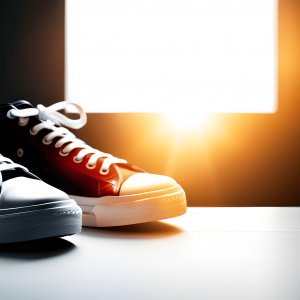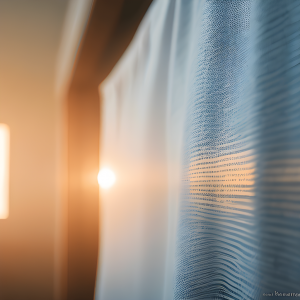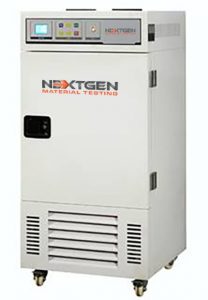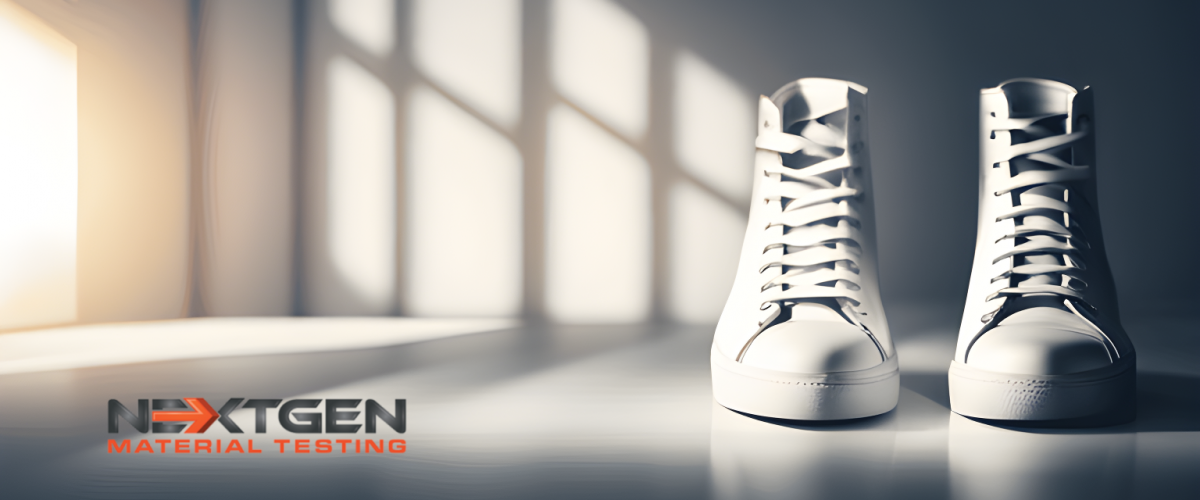Quality of Goods is the Key to Competitiveness
In a free market economy, competition encourages manufacturers to pay attention to maintaining and improving the quality of their products. Competitive pressure naturally forces companies to constantly improve their products, develop new technologies and production processes, product quality control methods, and find innovative solutions to meet consumer needs. If you want to survive in the market and remain competitive, you have to keep up with the times and introduce new, more efficient technologies.
In turn, technology is based on a vast layer of scientific knowledge that has been accumulated over the centuries of human civilization. Therefore, it can be considered a legacy of this development that an average consumer has no idea how much effort was spent on creating a particular item – from a banal sneaker to a modern device – so that this product could get to the shelves of the nearest shopping center and then end up with the consumer.
Maintaining Quality Throughout Use
It’s not enough to produce a quality product – you need to maintain that quality during use. When it comes to textiles, clothing, or footwear, manufacturers have begun to investigate the factors that have the greatest impact on wear and tear.

Such factors can be divided into three categories, namely mechanical, chemical, and UV exposure.
Mechanical factors include fabric wear due to friction. This is especially noticeable in places where the garment touches other surfaces more, on the elbows or knees. It is here that you can see signs of stretching and loss of original shape. Washing and drying clothes can damage the quality of the fabric and its color, fasteners and other decorative and functional parts of textiles.
Washing can also combine mechanical impact on clothing with chemical impact, as detergents can contain oxidizing agents or alkalis that act as aggressive chemicals on the fabric, changing its color and texture.
Separately from the effects of mechanical and chemical factors, the effect of ultraviolet radiation, which is a component of sunlight and is also present in artificial lighting, is considered.
How Does UV Radiation Affect Textiles?
Due to its high energy, ultraviolet radiation has a negative impact on textiles, in particular on their colors. It can also destroy the fabric itself, causing a loss of strength and resistance to damage. Under the influence of UV radiation, textile dyes can be destroyed by oxidation, which leads to changes in their structure and color, i.e. color fading. In the case of white and light-colored items, exposure to UV radiation often results in yellowing.
It is clear that textiles with increased resistance to discoloration will be in greater demand on the free market. This means that methods and testing equipment for determining discoloration will be in demand by textile manufacturers.
Special discoloration meters are used to measure the degree of wear and yellowing of textiles under the influence of UV radiation. These devices allow you to objectively assess changes in the color of textile samples after a certain period of exposure to UV radiation. A color change meter employs colorimetric methodologies to ascertain color coordinates and quantify the extent of color depletion. It is also possible to use a visual assessment of the color change by comparing the color of the sample to a color school that corresponds to different degrees of discoloration or yellowing.
The fading of bright colors under the influence of ultraviolet radiation is largely related to the photostability of the dyes used to color textiles. Photostability is the ability of a dye to retain its color when exposed to light, particularly UV radiation. If dyes are not sufficiently resistant to UV rays, they can decompose and lose their saturation under the influence of sunlight, which leads to fading of colors on textiles. That is, the substance of the dye itself decomposes under the influence of this radiation. Also, the characteristics of the fabric itself and the use of chemical treatments, finishes, etc. have a certain impact on color fastness.
Which Dyes are the Most Photostable?
Chemistry has a section of scientific knowledge dedicated to dyes and pigments. Therefore, the full answer to this question can be found on the pages of books on the shelves of scientific libraries. Here we list just 5 types of the most photostable dyes for the textile industry.
- Reactive dyes: These are one of the most popular dyes for textiles because they have good photostability and allow for bright and saturated colors. Reactive dyes chemically bond with the fabric fibers to form a stable bond, which further increases the color’s resistance to friction and washing.
- Dispersion dyes: These dyes are often used to dye synthetic textile materials such as polyester and nylon. They show very good photostability on these fibers.
- Sulfur dyes: These dyes are used to color cotton fibers. They have high photostability and can produce rich and durable colors. They are inexpensive and usually apply well. Sulfur dyes are mostly black, brown and dark blue.
- Pigment dyes: The main difference between pigments is that they do not dissolve in solvent and are suitable for the production of thick paste-like paints. At the same time, they have increased lightfastness. Pigments are used to dye a wide range of textile materials.
- Cationic dyes: These dyes are often used for dyeing natural fibers such as silk and wool, where they exhibit good photostability.
Even this brief overview makes it clear that the choice of dyes depends on the type of fabric. However, the discoloration resistance of a product can also be improved by applying additional treatments during the finishing process in textile manufacturing. This means that the photostability of the final product depends on many factors. That is why textile manufacturers are interested in using special testing equipment, such as discoloration meters. It allows you to determine the color fastness to UV radiation, and thus the quality of the textile product in general.
The data obtained can be used to improve production technologies, select optimal materials and dyes, and develop measures to increase product resistance to discoloration under the influence of ultraviolet radiation.
Phenolic Yellowing

You’ve probably noticed that, in addition to fading bright colors, even white clothes turn yellow. Given that this process reduces the long-term quality of goods, it has not escaped the scrutiny of researchers. As it turned out, the ubiquitous ultraviolet radiation was once again the culprit!
Textile products are believed to contain small but always present amounts of phenols. The source of these substances may be chemicals used in textile technology for the production, processing of fabrics and dyeing of textiles. It is also known that phenols are used as antioxidants in the production of plastic bags in which textiles are stored and transported. These phenols are colorless on their own. However, under the influence of ultraviolet light, oxygen and nitrogen in the air can react with each other to form reactive nitrogen oxides, which react with colorless phenols to form yellow nitrated derivatives. It is this process that, over time, under the influence of ultraviolet light, causes the appearance of a yellow tint that is especially noticeable on white items that have been used for a long time or stored with access to light and air.
Therefore, to prevent or reduce yellowing of white textiles, it is important to avoid prolonged exposure to direct sunlight and store them in cool, dry places, preferably using vacuum packaging.
Manufacturers are also developing and improving special impregnations or finishes that have anti-yellowing functions and also help to reduce other harmful effects of photo-oxidation on textiles. In these studies, it is particularly necessary to have appropriate testing equipment capable of simulating the effects of UV exposure on the appearance and functional properties of textiles.
A discoloration meter has been designed and is employed to replicate conditions that lead to discoloration and color changes in textiles under the influence of UV radiation.
Photoaging
In real-life operating conditions, UV fading takes a long time to occur. To simulate this process in an accelerated mode, test chambers with the ability to maintain an elevated temperature are used. As the temperature rises, all chemical processes accelerate. This type of research is known as photoaging or accelerated aging. Therefore, in addition to the UV lamp, such discoloration meters have a heating system that maintains the set temperature and evenly distributes heat throughout the chamber. UV lamps emit light in a certain spectral range, similar to that of sunlight. Such devices allow you to create controlled conditions for exposing textile samples to UV radiation and reproduce the duration of such exposure by increasing the temperature.
Laboratory testing involves exposing textile samples to different UV radiation conditions and controlling the time. Samples with altered parameters (e.g., different types of fabric, different dyes or impregnations, fabric production technologies, etc.) can be exposed to intense UV radiation for a specified period of time at a specific temperature.
After exposure, changes in textile samples such as changes in color, mechanical properties, and even structure and chemical properties can be evaluated. This allows researchers to better understand which factors have a particularly strong impact on discoloration resistance and find ways to prevent yellowing in real-world applications. By comparing the results of such studies, it is possible to identify the variants that give the greatest resistance to UV wear.
Laboratory modeling of photooxidation is an important tool for understanding the processes that occur with textiles and other materials when exposed to light. This research helps manufacturers develop more resistant and durable textiles that retain their brightness over time.
Thus, UV wear testing of textile products is an important step in the process of developing and manufacturing high-quality and sustainable products. It ensures that textiles with enhanced discoloration resistance retain their quality over a long period of use.
NextGen’s Discoloration Meter
To begin with, there are two types of testing equipment available under this heading. Both items are designed with NextGen Material Testing’s core business principle in mind – to provide the highest quality customer service combined with the best products available. Both units can fully satisfy your testing laboratory in all the needs that are required from discoloration testing equipment. The only difference is the size of the equipment.
The compact discoloration meter model from NextGen NG-DISCO-A has external dimensions
21.65 x 14.15 x 22.45″
(550 x 36 x 57 mm)
This allows you to position the internal camera with the workspace
19.7 x 11.8 x 13.75″
(500 x 300 x 350 mm)
While the NG-DISCO-B model has larger dimensions, which allows it to handle larger product samples.
External dimensions of NG-DISCO-B
26.4 x 29 x 57″
(670 x 740 x 1450 mm)
With an internal chamber volume of 150 L
21.65 x 23.62 x 21.65″
(500 x 600 x 500 mm)
NextGen’s customers can therefore choose the size of testing equipment that best suits their production needs.
Both models have the ability to set and maintain the test temperature in the range from room temperature to 200°C. They come complete with two germicidal UV lamps and guaranteed after-sales support and service.
NextGen’s UV Discoloration Meter is an ideal instrument for simulating the effects of sunlight and elevated temperatures on samples to determine the resistance of fabric to discoloration. Both models of this system are designed to meet size and temperature standards and comply with ASTM D1148-95.
We wish our customers consistent product quality regardless of weather and market fluctuations!
